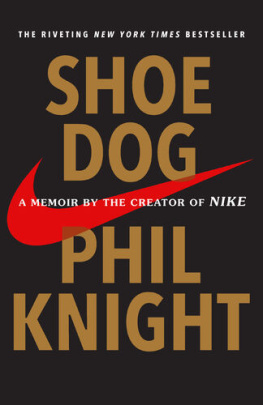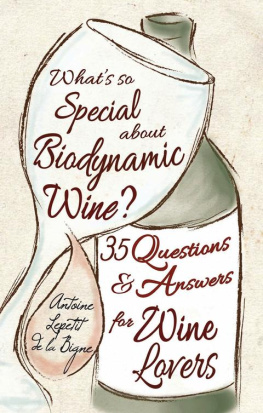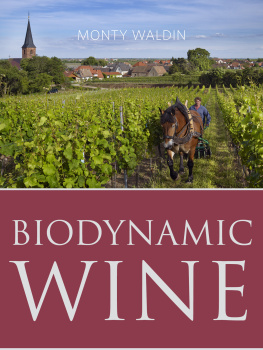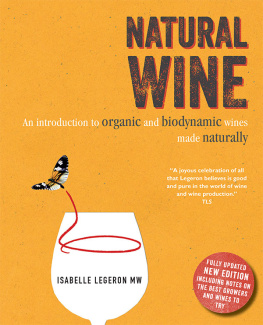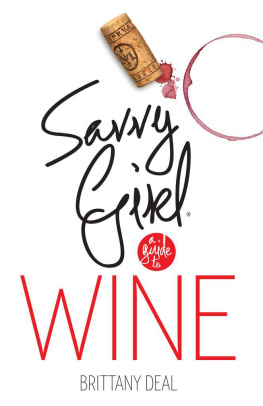Contents
Landmarks
Print Page List
ACKNOWLEDGMENTS
I wasnt going to write another wine book. Or so I thought. Then on a hot and sweaty summer evening, I was out to dinner with Talia Baiocchi, the brilliant writer, editor, and leader of the drink website PUNCH. Sitting at Brooklyn wine bar the Four Horsemen, we were drinking Manu Landron and Marion Pescheuxs ComplemenTerre muscadet. Then we got down to gossip and mutual advice-giving and she said to me, You know what book the world needs?
I knew that she was right.
So, thank you to Talia. That drink put me on the path toward the publisher and editor I most longed to work with, Ten Speed Press and Emily Timberlake. It has been one of the best publishing experiences in my not-too-short career. I am grateful. A big thanks as well to the team of inspired professionals at Ten Speedincluding Anne Goldberg, Ashley Pierce, Lizzie Allen, Jean Blomquist, and Karen Levywho helped clean up my prose and general loose ends and provided brilliant art direction. Im sure overseeing the work of a dyslexic writer is a stressful task. Nishant Choksis whimsical illustrations are perfect; I remember such delight when I first downloaded the graphics file. Actually, I gasped, Yes! I cant thank you enough for taking this book on.
Now, about those contracts. If I had to work on my own, Id probably never ever get a book finished, so a big hug of thanks to the wise and patient Joel Weinstein, who acted as agent and lawyer (and put up with my neurosis, to boot).
Then there are those friends who helped along the way with an edit here, a fact-check there, a feedback and can you read this right now?everywhere. Molly Kass! You young little genius, you. I really hope you dont find yourself in this field. Run! But in truth, I think fate will take its course. Petra Laohakul, youre the best. Christy Frank, fearless cheerleader and managing editor of The Feiring Line, thank you for your guidance. Hank Beckmeyer, thanks for your input, and to ma fille franaise , Pacaline Lepeltier, my lovely, razor-sharp fact-checker and soundboard, as always, lots of love. Finally, a toast to the memory of Jules Chauvet, Marcel Lapierre, and my friend and first publisher in French, Jean Paul Rocher. If only they could have seen the flourishing from their seeds. As they say in Georgia, gargimajos to all of you.
ALICE FEIRING is a leading voice in the natural wine movement, and the winner of the James Beard Award and Louis Roederer International Wine Writers Award. She is the author of seven books, including The Battle for Wine and Love , Naked Wine , For the Love of Wine , and The Dirty Guide to Wine . In 2013, she was named Imbibe magazines Wine Person of the Year. Her website, The Feiring Line, has been an invaluable resource for natural wine enthusiasts since 2004. She lives in New York City.
APPENDIX 1
NATURAL WINE FAIRS
If you have an old-fashioned notion of what a wine fair is likesay, heading to the Marriott Hotel in Times Square to partake in a $1200 tasting of the top-scoring wines and all the pomp and tuxedos associated with itget ready for an adjustment. The natural wine version bears no resemblance. These are parties, there are food trucks, there is pizza, there is great coffee or a superior tea dealer or real sake importers. Under one roof, you can engage with a wide range of winemakers and, of course, taste their stuff. You get to speak with real live winemakers with muscular hands, not marketers. These are your wine heroes. Attending is the very best way you can learn about wine.
These fairs used to be the wine professionals territory, but now there are many open to the public. The price (minus the airfare) is cheap to relatively cheap, between $5 and $75. Chances are theres one in your time zone, but here is where your passport comes in handy.
Think ahead. Reserve a ticket (in the States these wine tastings sell out fast). At the best ones, you can taste natural wines from the world over, engage with those real winemakers, and meet like-minded wine-obsessed folk. These are great first steps to start building relationships with those on the frontline. But first, be prepared.
PROTOCOL
After you pay your entrance fee, youll often get a glass to take home. Youll get a booklet with the wines. Unless its a petite tasting, you wont be able to taste everything. Take out your pen and create your strategy. Youll want to taste anywhere between fifty and one hundred wines. More? Sure. (See Spit or Swallow, .)
Many people taste whites first and then reds. This is not my favorite strategy because I might never get back to that winemaker. If youve got an unlimited amount of time, you can try to methodically taste at every single table. Or you can taste wine from two wineries from every region, just to get a feel of them and to understand what you like and why you like it. Another approach is to concentrate on a region, a grape, or a country, and mark off everyone in that tasting book that has something youre looking for.
BEHAVIOR: If youve ever been to some big-points tasting, youve witnessed some very obnoxious behavior. Dont do it! At a natural wine fair, most likely its the winemaker and not a hired hand pouring the wine. Be respectful. Make eye contact. And by all means, ask them questions. Youre there to learn.
DRESS: This is serious work, and youll be on your feet tasting for hours. Wear comfortable shoes, for Gods sake. And while some wear white, its best to notunless you want it to turn into a tie-dyed garment of saturated red.
HYGIENE: Go scent-free. Im talking about your scented soap, deodorant, and moisturizer. Do not, I repeat, do not use aftershave or any sort of cologne, including essential oils, and this also goes for having recently smoked pot. It smells.
LANGUAGE: Dont expect winemakers to speak English. This is true whether youre tasting in the United States or elsewhere. If you dont speak the winemakers native tongue, by all means, just be polite. Everyone understands the words hello and thank you.
NOTE TAKING: Even if its a star, a heart, or a checkmark.
TIP: Make sure you ask people standing next to you if theyve tasted anything exciting. This is a great way to meet fellow enthusiasts, and youll get some pretty spectacular recommendations.
SPITTING: Theres a lot of wine. Most likely youll be tasting between fifty and one hundred bottles of wine, and if you dont spit, youre going to be blotto after the fifteenth. You want to learn and be clear-headed, and you most definitely do not want to get drunk (see on how to taste and spit). I find that I feel the effects of the alcohol by what gets absorbed through my cheeks, so for every five glasses I taste, I swish and swirl and spit water to clean things out.
THE TOP WINE FAIRS IN THE WORLD
What: La Dive Bouteille
Where: Saumur, Loire, France
When: Midwinter
Why: Legacy
This is big daddy of them all. Run by Sylvie Augereau, this is now held in a cave in Saumur, but it has been held in several locations over the twenty years or so that it has existed. It is the most reliable, the most intense, the most extraordinary wine fair. Its held at the very end of January or the very beginning of February on a Sunday or Monday. But La Dive tops off a packed weekend. You see, the last weekend in January is when the Loire turns into naturel central. On Saturday, its Les Pnitentes, les Greniers St. Jean. On Sunday, theres Les Anonymes, a scruffy off-festival that claims to have under-the-radar winemakers. Though not totally true, some new faces do show up. The wines there tend to be zero/zero. Then on Sunday and Monday, theres La Dive. If you fancy yourself crazed for natural wine, youll need to go at least once in your life for solid street cred and a really fabulous time.
What: Real Wine Fair


